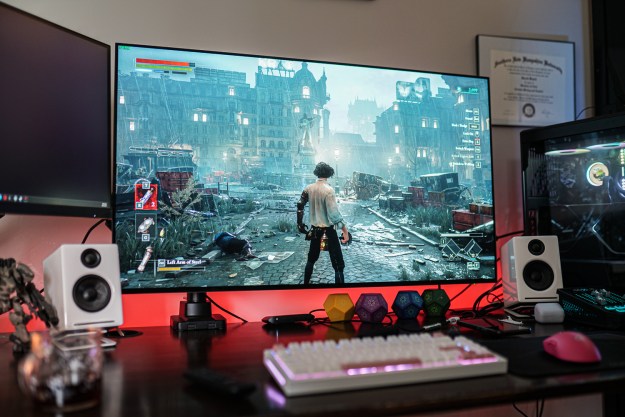When AMD announced Fidelity Super Resolution (FSR), it had a big advantage over Nvidia’s competing Deep Learning Super Sampling (DLSS) technology: Open-source code. Although DLSS still isn’t open-source, Nvidia has taken a big step against FSR by making the feature available to any developer.
Alongside a showcase of RTX features like DLSS running on an ARM-based computer, Nvidia announced that it would make the DLSS software development kit (SDK) available for anyone to download. Previously, developers would need to file an application with Nvidia to get their hands on the proprietary upscaling technology.

Developers are now free to download and use the SDK, which is almost certainly a response to AMD’s open approach with FSR. Although announced a while ago, FSR just launched for the developers through AMD’s GPUOpen platform, and Nvidia’s sudden shift to make DLSS more accessible to developers puts some heat back on AMD.
The move takes one of FSR’s biggest features. In our FidelityFX Super Resolution review, we found it to be a competent but clearly inferior competitor to DLSS. However, we concluded FSR still stood out thanks to how accessible it was for developers, unlike DLSS. That has changed.
By opening the floodgates, Nvidia has made DLSS as easy for developers to use as FSR. That said, AMD’s feature still has a leg up in one area. Unlike DLSS, FSR works across multiple generations of graphics cards from AMD and Nvidia. DLSS uses Tensor cores that are only available on Nvidia RTX graphics cards, limiting the number of users that can take advantage of the feature.
In addition, DLSS has been available natively in the Unity game engine and as a plugin for Unreal Engine 5, so it’s not clear if the open availability will translate into more games supporting the feature.
As well as releasing the SDK, Nvidia updated it with new features. The current version now includes support for Linux, as well as a sharpening slider and an auto-exposure option for low contrast scenes. Both of these features are for developers to fine-tune DLSS in their games, not for the player.
Thankfully, the DLSS vs. FSR battle is one where gamers win. We’ve already seen games like Necromunda: Hired Gun, Marvel’s Avengers, and Edge of Eternity that support both technologies, allowing gamers to access a critical upscaling feature regardless of the GPU they own. The race is only starting to heat up, which should mean we’ll see more supported games down the line. And that’s exciting no matter which brand you have in your system.
Editors' Recommendations
- How I unlocked the hidden modes of DLSS
- As a lifelong PC gamer, these are the apps I couldn’t live without
- New Nvidia update suggests DLSS 4.0 is closer than we thought
- Don’t buy a cheap GPU in 2024
- Dragon’s Dogma 2 PC performance: best settings, crashing, stuttering





